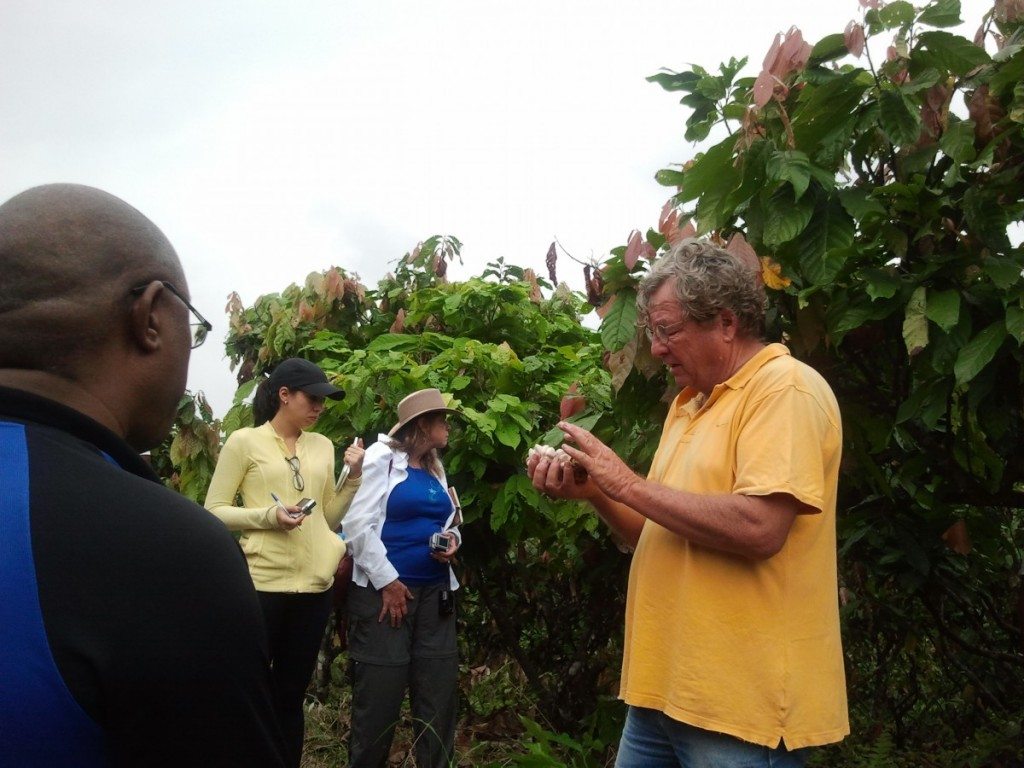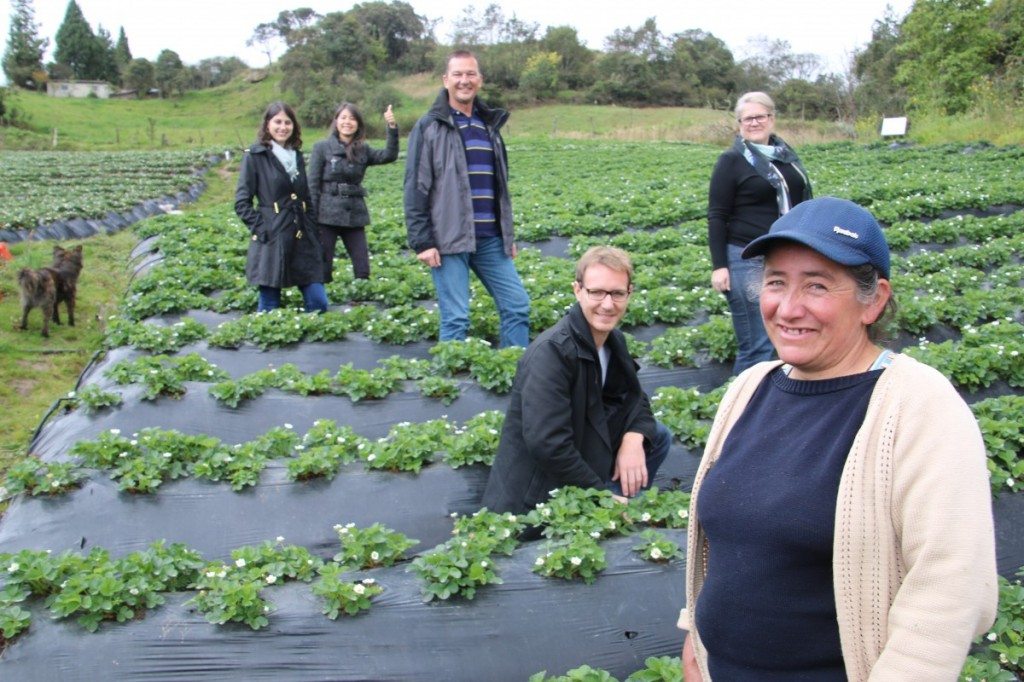More than three million children die each year from malnourishment and millions more lack access to food, resulting in stunted growth, poor health, and chronic hunger. Every man, women, and child deserve equal access to nutritious food, but the gap between the food produced, the food that makes it to the table, and the food needed to feed an estimated 9 billion people by 2030 is alarmingly high. The chronic hunger problem facing millions of people is not new. The race to end hunger calls for an integrated approach with the communities that are struggling to feed one another.
The Sustainable Development Goals (SDGs)—or the Global Goals—address hunger in Goal #2: end hunger, achieve food security, improve nutrition, and promote sustainable agriculture.
The Global Engagement Forum will use the SDGs as a foundation for conversation in advancing solutions to global challenges like this. The conference will be held November 10th-12th in Washington, DC and will call on all sectors to partner and approach global challenges from a new perspective through the SDGs.
1. You can’t grow your way out of a hunger problem
The immediate and unquestionable problem of hunger often prompts nonprofits and governments alike to turn to old solutions: grow more food faster. However, the world already produces enough food to feed everyone, but so much is lost between field and table, millions wind up hungry. Harry Pastuszek, Vice President for Enterprise and Community Development at PYXERA Global, works to effectively join business and community development to address this important issue of post-harvest loss.
There is enough food grown every year to feed our growing planet, and cost effective, tested technologies are readily available to improve storage. It’s time to put them to work, and focus our innovation effort on how best to get that saved food into the hands of the hungry.
“The development community is trying to grow its way out of a hunger problem but food is rotting before it gets to the table. 40 percent of all fruits and vegetables are lost in substandard storage or transit, or left on the farm, in what is today called post-harvest loss. Innovation is needed on market linkages and distribution not production or storage. There is enough food grown every year to feed our growing planet, and cost effective, tested technologies are readily available to improve storage. It’s time to put them to work, and focus our innovation effort on how best to get that saved food into the hands of the hungry.”
2. Genetic diversity is fundamental to human survival
Imagine a world without chocolate; or worse, a world where chocolate tastes like cardboard. With an increase emphasis on creating agriculture resistant to disease, but high in productivity and therefore more profitable, taste is getting lost. Chocolate is no exception. In countries like Ecuador, this has led to the loss of hundreds of acers of flavorful cacao. In 2011 the Fine Chocolate Industry Association created the Heirloom Cacao Preservation Initiative in partnership with the USDA ARS.

For many in the fine chocolate industry, the loss of cacao biodiversity, especially the loss of older traditional and fine flavor cacao varieties, is more alarming than cacao scarcity.
“Cocoa flavor is not something that just exists, it is something that is influenced every day, all year long by everything from genetics, farming practices, and post-harvest practices, to roasting and refining. Each step is important – you must do the right things the right way,” said Samuel Von Rutte, Hacienda Limon, Ecuador.
Since the 1900s, some 75 percent of crop diversity has been lost from farmers’ fields. Better use of agricultural biodiversity can contribute to more nutritious diets, enhanced livelihoods for farming communities, and more resilient and sustainable farming systems.
3. To end hunger, collaboration is key
Producing more food on less land, using less water and energy does not necessarily result in an improvement. While more and more large corporations try to address the hunger, nutrition, and food security problem the world faces, no one can do it alone. This was evident over the last year in conferences such as the 2014 Net Impact Conference, where conversation focused on eliminating food waste, scaling local and organic food, improving equality of access to fresh food, and ‘the carnivore’s dilemma.’
“There are really big complex challenges that no one company or organization can solve alone. But they are real and they are going to require us to bring the best of both the private and public sector to bear to try and address them.”
“We have some really significant challenges ahead of us as a society and as a planet. Whether it’s about eliminating hunger, protecting biodiversity, combatting climate change, protecting human rights, or empowering women and girls,” said Natalie DiNicola, Vice President of Sustainability and Signature Partnerships at Monsanto. “There are really big complex challenges that no one company or organization can solve alone. But they are real and they are going to require us to bring the best of both the private and public sector to bear to try and address them.”
4. Listen for the Local Solution
More than a third of the population of Bogota, Colombia suffers from food insecurity, 30 percent live in extreme poverty alongside a high unemployment rate—11.3 percent are unemployed and 25 percent have only informal employment. In such an environment, sometimes the best way to help is to shut up and listen. Rainer Stern, a participant in SAP’s Social Sabbatical program in Bogota, Colombia, worked on a pro bono project with a local organization that makes nutritious food more accessible. Rainer shared how listening to understand, not respond, changed his perspective on partnership, community relations, and the Bogota community.
“While this is very easy in theory,” said Rainer, “in reality, it poses a much greater challenge than one initially anticipates.” Rainer, an experienced sales executive, realized he had to change his standard approach. “Smart business people often have a tendency—even urgency—to immediately come up with ideas and solutions, without necessarily having a clear understanding of the problem. Once I think I know,” he said, “I typically don’t want to spend the time to validate that my assumptions are correct.” By listening more closely, Rainer and his team were able to develop an effective approach for the organization to expand their reach within the community.
Join PYXERA Global, SAP, Dow and other organizations on November 10-12, 2015 in Washington, DC for the Global Engagement Forum to participate in the conversation to achieve food security, improved nutrition, promote sustainable agriculture and address other global challenges.
Feature photo from Webvilla.
Morgan Singer
Morgan Singer is the communication associate at PYXERA Global where she supports media monitoring and thought leadership for the organization. In addition she helps with communication and online publishing needs of the New Global Citizen. Morgan is passionate about creating a positive global culture.






